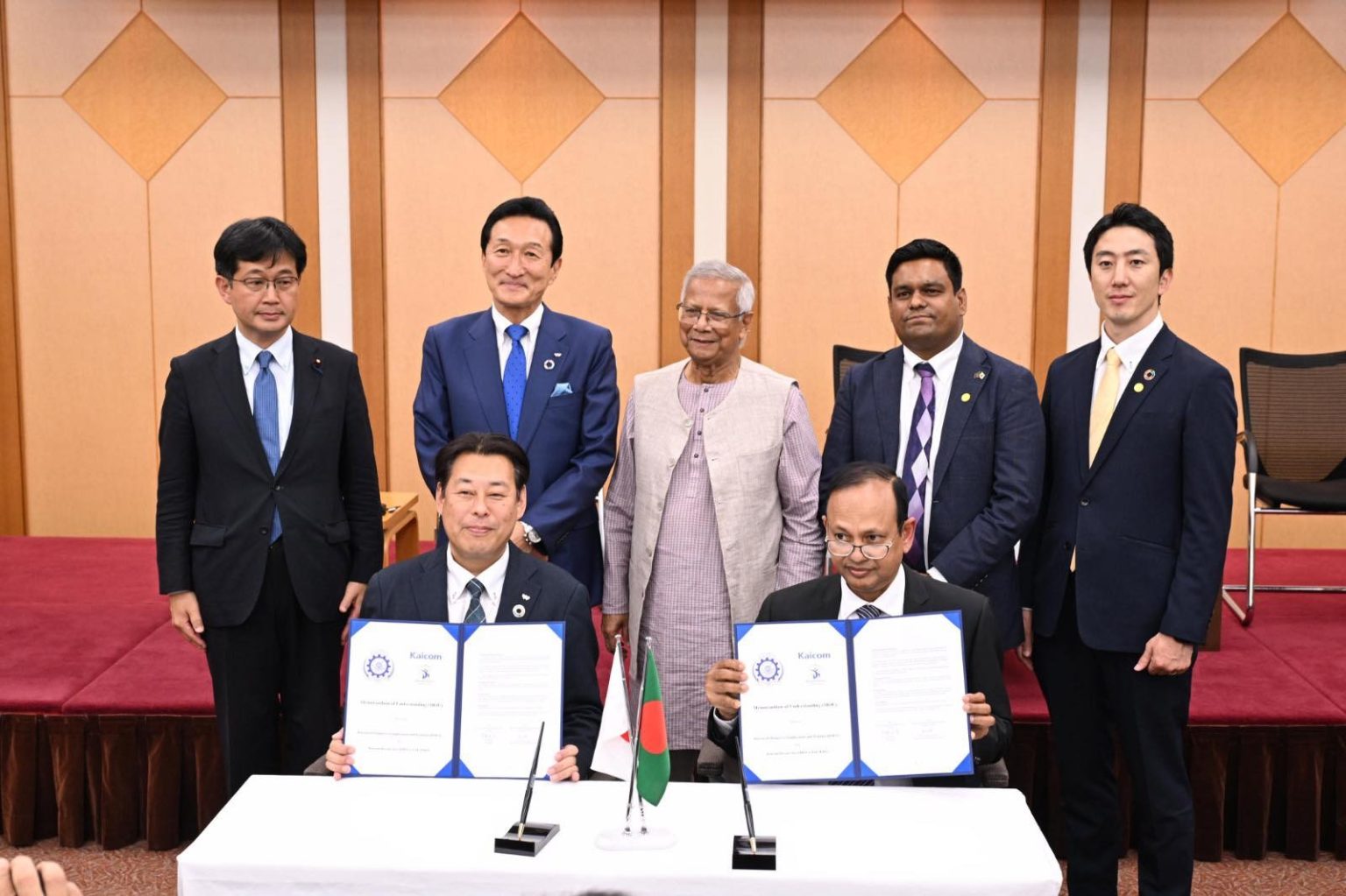In a significant development for Bangladesh’s overseas employment sector, Japanese authorities and businesses on Thursday announced plans to recruit at least 100,000 Bangladeshi workers over the next five years, in response to Japan’s growing labour shortage.
The announcement was made at a high-profile seminar titled “Bangladesh Seminar on Human Resources”, held at the Toshi Kaikan Conference Hall in Tokyo.
Chief Adviser Muhammad Yunus attended the event and expressed strong commitment to facilitating employment opportunities for Bangladeshis in Japan.
“This is going to be the most exciting day for me, the most inspiring day. This will open the door for Bangladeshis to not only work but to know Japan,” said the chief adviser, according to a statement from the CA’s Press Wing.
To support this initiative, two Memoranda of Understanding (MoUs) were signed at the event. The first was between Bangladesh’s Bureau of Manpower Employment and Training (BMET) and Kaicom Dream Street (KDS), a Japan-Bangladesh joint venture.
The second MoU was signed between BMET and Japan’s National Business Support Combined Cooperatives (NBCC)—a federation comprising over 65 companies operating in Japan—along with the Japan Bangla Bridge Recruiting Agency (JBBRA).
“This gathering is about opening the door,” said Professor Yunus. “Bangladesh is a country of 180 million people, and half of them are under 27. The government’s job is to open the door for them.”
Japan, one of the world’s most technologically advanced and rapidly ageing societies, is facing a steep decline in its working-age population.
As a result, it is increasingly turning to foreign labour to fill critical workforce gaps across sectors such as caregiving, agriculture, manufacturing, and construction.
Mitsuru Matsushita, Representative Director of the Supervising Organisation Shizuoka Workplace Environment Improvement Cooperative, noted the growing interest among Japanese companies in hiring Bangladeshis.
“Many Japanese companies are facing enquiries about Bangladeshis, and I believe this trend will continue. Bangladeshi talents hold great potential. It is our duty to nurture their talent,” he said.
Mikio Kesagayama, Chairman of NBCC, recalled Professor Yunus’s earlier visits to Japan where he spoke of empowering women through microcredit. He noted the federation’s long-standing focus on workforce quality.
“Our Federation looks to Bangladesh for young and capable labour. They can contribute to the development of both Bangladesh and Japan,” he said. “In the coming five years, we are prepared to welcome more than 100,000 Bangladeshi workers.”
Miki Watanabe, President of Watami Group, shared future plans for skills development in Bangladesh. “A school we established in Bangladesh trains 1,500 students every year, and we are now planning to raise the number to 3,000,” he said. “With technical education in Bangladesh, they can enter the job market in Japan.”
Highlighting both the potential and current challenges, Hiroaki Yagi, Chairman of the Japan International Trainee & Skilled Worker Cooperation Organisation (JITCO), mentioned the shortage of Japanese language teachers in Bangladesh as a key hurdle to increasing the flow of skilled workers.
Niki Hirobumi, State Minister of Japan’s Ministry of Health, Labour and Welfare (MHLW), acknowledged the demographic crisis Japan is facing.
“Japan is facing a declining population and thus will need the support of the Bangladeshi workforce. This can be promising not only for Bangladesh but also for Japan,” he said.
In his welcome remarks, Daud Ali, Bangladesh’s Ambassador to Japan, highlighted the scale of opportunity. “By 2040, the Japanese labour shortage could reach 11 million, and Bangladesh could take this opportunity to send more skilled workers.”
This landmark agreement comes at a time when Bangladesh is seeking to expand its overseas labour markets, diversify remittance sources, and equip its youth with skills suitable for global employment. Japan’s openness to skilled migration from Bangladesh is seen as a win-win for both nations.


